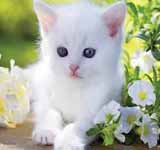1. Dogs

The dog (Canis lupus familiaris) is a predator from the canine family (Canidae), and a domesticated subspecies of the wolf. Its scientific name was published in 1758 as Canis familiaris by Carl Linnaeus. The dog is found on all continents, mostly in the company of humans. The dog has been used by humans for thousands of years, for example in hunting, as a shepherd dog, draft animal, police dog or assistance dog, but more often as companion animal. Keeping dogs is not without risk: there are 150,000 bite incidents in the Netherlands every year and an estimated 50,000 people die each year after a dog bite.
2. Guinea Pigs
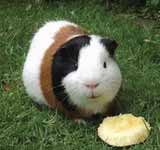
3. Ducks
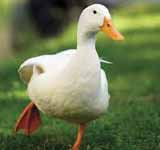
The domestic duck is a subspecies of anseriformes bird of the family Anatidae. Unlike some other ducks, the domestic duck has an affable temperament, which makes it a good barnyard animal. These ducks are very versatile and are present in ponds and backyards. Their life expectancy is from nine to twelve years. Its weight is between 3.6 and 4.1 kg, although larger varieties have been developed. Its plumage is white and has its beak and legs orange. Some may have the most yellow beak, but if they have the black beak it is considered a serious lack in the classification. The white Peking duck is a fast-growing duck and chickens are easy to distinguish from adults because they have bright yellow plumage.
4. Ferrets
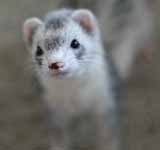
The cat or domestic cat is one of the oldest pets of humans. The domestic cat belongs to the feline family (Felidae). The word cat is also common, sometimes more specifically in the case of a female cat. A male cat is called a tom or tomcat. The lifespan of domestic cats is roughly the same as that of the other cats. A cat can be considered old after ten years. Cats die on average after fourteen to sixteen years. The oldest Dutch cat was 28 years old. The oldest cat in the world was 38 years and 1 day old. In general, ages are difficult to control because cats do not have a birth certificate. Breed cats have this, but on average they are less old, around 10-13 years old. This is due to congenital diseases that occur more often in purebred cats due to a high inbreeding coefficient. A similar picture is also seen with purebred dogs.
6. Hamsters

7. Hedgehogs

8. Budgie
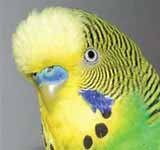
9. Rabbits
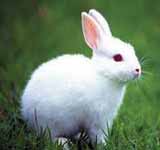
The domestic rabbit is a European rabbit, which was domesticated for human consumption in Western Europe in the middle Ages, a relatively recent era compared to other domestic animals. The rabbits in hutches are small mammal herbivores that differ very little from the species strain, listed in the order of lagomorphs, the family of the leporidae and kind Oryctolagus. At the beginning of 10th century there are more than 100 breeds of domestic rabbits. As a social animal, the domestic rabbit is easy to breed and can live on average for 5 to 8 years for farmed rabbits, with the domestic dwarf rabbit being able to live up to 10 or 12 years. Rather docile, even affectionate towards humans, if he is used young in their company, he is also used as a laboratory animal and it is now a popular pet, especially the dwarf rabbits, to the point of giving rise to the organization of competitions.
10. Red Foxes

11. Chickens
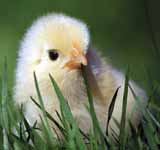
The chicken is a very well-known domesticated bird species from the pheasant family (Phasianidae), which in turn belongs to the order of the hen birds (Galliformes). This fowl species is also the most common bird species in the world. There are 52 billion chickens in the world. There are a very large number of varieties. In the strict sense, the name chicken refers specifically to the female specimens of this hen, the hens. In the Netherlands, however, the name chicken is often used for the species as a whole, including the roosters.
12. Goldfish
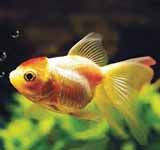
The goldfish (Carassius gibelio auratus) is the breeding variety of the giggle. The color of the original goldfish was really golden. The modern goldfish is smooth orange, red, black, white and these colors in combination of color, has metallic shiny scales and a single tail and ventril. This form is called hibuna in Japanese. There are a few dozen mutations (pearlescent scales, double tails, bladder eyes, spot patterns, thickening on the head, elongated fins and elongated nose tubes) that can occur in all kinds of combinations.
13. Pigs
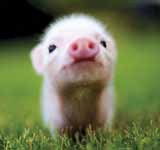
Pigs are a type of ungulate animals that have long bells and lobes and are animals originally from Eurasia. Pigs are omnivores which mean they consume meat and plants. In addition, pigs are among the most intelligent mammals, and are reported to be smarter and easier to maintain than dogs and cats. The domestic pig is a mammal from the family of pigs (Suidae). In 1777, Johann Christian Polycarp Erxleben published the scientific name Sus domesticus for the domesticated pig, as the name for a species. Many authors, however, regard the domestic pig as a domestic wild boar and name it as a subspecies thereof. In that case it is the scientific name Sus scrofa domesticus Erxleben, 1777. Pigs were domesticated 5,000 to 6,000 years ago. In the Netherlands live more than 20 million and in Belgium 6.7 million pigs.
14. Alpacas
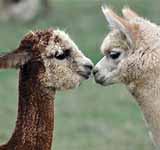
15. Donkeys
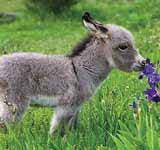
The common Ass (Equus asinus or Equus africanus asinus) or more commonly "Donkey" is a species of mammal herbivores and ungulates belonging to the family of Equidae. Often compared to the horse, the donkey has its own morphological characteristics that clearly differentiate it from its cousin, its long ears being its most easily identifiable attribute. The latter offer him a particularly fine hearing, and which, supplemented by a wide field of vision and a sense of smell strongly developed, allow him a good perception of the world around him. Baudet is the name given to the breeding male. The females, called donkeys, give birth to a young donkey after twelve months of gestation. He can get up and run shortly after birth. The donkey can also hybridize with other equines, for example with the mare to give birth to a new animal, the mullet. Its main use in the world is always work-related, in developed countries it is rather recognized as leisure animal or pet.
16. Horses
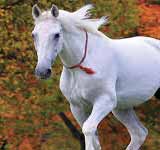
The horse (Equus ferus caballus) is a domesticated hoofed animal from the order of the odd-hoofed, and the equine family (Equidae). The scientific name of the domestic horse was published as Equus caballus in 1758 by Carl Linnaeus. The domestic horse is mainly kept as a riding and draft animal. The horse belongs to the odd-hoofed (Perissodactyla) and has only one toe per leg. Originally a horse has five toes, and the hoof is actually the enlarged nail of the middle finger. Remains of the other toes are the griffel bones (ring and forefinger), the barker (thumb) and the trace (little finger). Their first response to a threat is usually scarring and then fleeing. Over the centuries, the horse has proved very valuable to humans for all kinds of purposes.
17. Gerbils
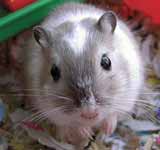
Gerbils (also known as Gerbillinae) are subfamilies of the rodent family Muridae, which also includes mice and rats from the Old World (Murinae). They generally occur in arid steppe regions and semi-deserts. Because few animals can thrive in these areas, they have few enemies. They can escape well from other enemies (such as snakes and birds of prey), because these animals can jump well. Hence their (by) name: Jumping Mouse.
18. Quail

19. Sheep
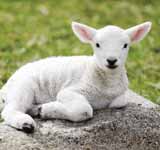
The sheep (Ovis orientalis aries) is a cloven-hoofed mammal that has been domesticated by humans from the mouflon (Ovis orientalis) to supply wool, among other things. The scientific name of this taxon was published as Ovis aries in 1758 by Carl Linnaeus. The sheep is a ruminant. In sheep, the male is called a ram, the female a ewe and the young a lamb. A castrated ram is called a hamel. A wether is quieter than an uncut ram and is therefore historically often used as the leader of a herd, with a bell around the neck. A sheep can reach the age of 15 to 20 years. A sheep loses its teeth and molars so that it can no longer eat well. Sheep have 32 teeth and molars, they have no fangs and no incisors at the top. Above and below they have 6 pre-molars and 6 molars, and only in the lower jaw 8 incisors.
20. Turkeys

21. Barb

22. Chinchillas

23. Cows
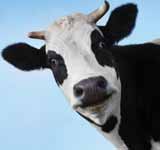
The cow is an important animal that is found everywhere in the world. This gives a great variety of milk. Cow has a special importance in India since the Vedic period. Initially cow was used as a medium of exchange, and the prosperity of man was calculated from its numbers. Even with Hindu religious view, the cow was considered sacred. In India, 30 breeds of cow are found. Breeds of Red Sindhi, Sahiwal, Gir, Devni and Tharparkar are the major breeds of milch cattle in India. In the omnibox sight, Indian cow can be divided into three sections. In the first category, the cow comes, which gives plenty of milk, but their pansantan is inactive and therefore unavoidable in agriculture. These types of cows are of the milk-based monogamous monogamy. The second cow is those who give less milk but their calves are used for agricultural and carriage pulling. These are called the Vatsagadhik Ekangi Dynasty. Some cows give milk too much, and their calves are also fat. Such cows are called sarwaangi breed.
24. Guppy
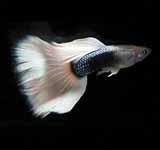
25. Goats
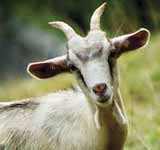
The goat is a pet, which is mainly grown for milk. In addition, it produces fiber, leather, manure and hair. Goats are found as pet and wild form in the world and it is estimated that pet goats from around the world are a descendant of the wild goat of Southwest Asia and Eastern Europe. With a significant fertility of humans, goats have been made in different breeds according to location and experimentation and today there are about 300 breeds in the world. According to the United Nations Food and Agriculture Organization, there were more than 98.4 million goats worldwide in 2011. A beneficial aspect of goat rearing is that it can be easily managed by children and women. The popularity and success of the goat business can be gauged from the fact that goat farming is being commercialized in different parts of the country. Industrial houses and businessmen are training on goat rearing and large goat farming are successfully running.
26. Llamas
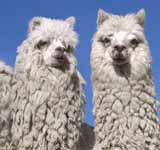
The Llama (Lama glama), sometimes also called sheep's camel, is a domesticated South American hoofed animal from the camelid family (Camelidae). The scientific name of the species was published as Camelus glama in 1758 by Carl Linnaeus. The name "lama" comes from Quechua. The lama has a height at the withers of 109 to 119 centimeters, a head-rom length of 120 to 225 centimeters and a body weight of 130 to 155 kilograms. The fur consists of thick wool. The face is thinner hairy. The coat color varies from white through red-brown and gray to black, both plain and spotted. There are two varieties, the chaku and the ccara. The chaku, the more general breed, has a fairly long woolly coat, the ccara a very short coat. The lama feeds on all kinds of plants and grasses that grow in the mountains. They usually deposit their droppings at a fixed location.
27. Columbines

28. Molly

29. Mosquitofish

30. Water Buffalo
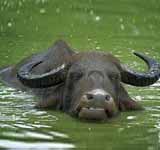
31. Camels
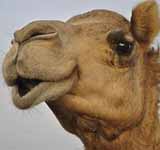
The camels (Camelus) form a genus of cloven-hoofed mammals from the camelid family (Camelidae). The scientific name of the genus was published in 1758 by Carl Linnaeus. Two recent species belong to this genus, the wild camel (Camelus ferus) and the dromedary (Camelus dromedarius). Both species live in the drier regions of North Africa, the Horn of Africa, the Middle East and Asia. The species can cross with each other. A cross between a dromedary and a camel (hybrid camel) is larger than both parent animals, and has one very large bump. The camels have been around since the first quarter of the first millennium BC domesticated in Old Somalia.
32. Cockatiel

33. Oscar

34. Finches

35. Koi

36. Rats

37. Siamese fighting fish (Betta)
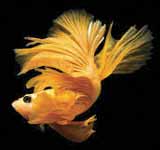
Betta fish is a freshwater fish whose original habitat are several countries in Southeast Asia, including Indonesia, Thailand, Malaysia, Brunei Darussalam, Singapore, and Vietnam. This fish has a unique shape and character and tends to be aggressive in maintaining its territory. Among fans, Betta fish are generally divided into three groups, namely ornamental hickey, fighting hickey, and wild hickey. In Indonesia there is original hickey, one of which is Betta channoides found in Pampang, East Kalimantan. Betta fish is one of the strong fish that survives for a long time so that if the fish is placed in a container with a small volume of water and without an air circulation device (aerator), this fish can still survive.
38. Silk Moth
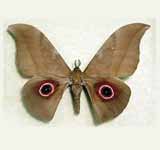
39. Stingless Bees
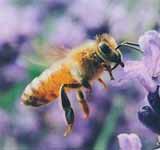
40. Honey Bees

41. Canaries

42. Geese

43. Mice
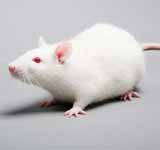
The colored mouse, also called tame mouse, is the tame descendant of the house mouse (Mus musculus). They are considered a form of this mouse. The name color mouse was given because this mouse, unlike its wild ancestor, appears in all kinds of colors. The color mouse is fairly easy to keep. Males are less popular because their urine smells strongly and they are less easily linked to other male mice. Coloring mice are lively animals that are not likely to bite people. A color mouse can be made tame by carefully gaining its confidence with delicacies. Young color mice are easy to tame by taking them in hand a lot.

